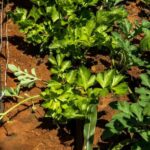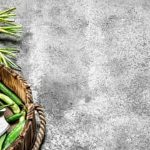Intensive gardening, also known as close spacing or square foot gardening, is a method of growing vegetables in a way that maximizes space and yield. This method involves planting crops in closely spaced geometric patterns, which not only conserves space but also makes for easier maintenance and higher productivity. In this article, we will delve into the world of intensive gardening and explore its various aspects, from its principles to successful practices.
When it comes to vegetable gardening, many methods exist, but intensive gardening stands out for its efficiency and productivity. This method allows for the cultivation of a large variety of vegetables within limited space, making it an ideal choice for urban gardeners or those with small outdoor areas.
Throughout the sections that follow, we will discuss the benefits of intensive gardening, its underlying principles, techniques for implementation, as well as choosing the right plants, tools and supplies needed for success in this form of gardening. Additionally, we will provide tips based on successful practices and examples of how intensive gardening has been effectively utilized by experienced gardeners.
Whether you are a novice or seasoned gardener looking to maximize your yield in limited space, this article aims to guide you through the world of intensive gardening.
Benefits of Intensive Gardening
Increased Yields
Intensive gardening is known for its ability to produce high yields of vegetables in a small space. By closely planting and efficiently using the available soil, gardeners can harvest more vegetables from the same area than traditional gardening methods. This makes intensive gardening a great option for those with limited space but still want to enjoy an abundant harvest.
Weed Control and Water Conservation
The close spacing of plants in intensive gardening creates a natural canopy that helps to shade out weeds, reducing the need for frequent weeding. Additionally, because the plants are grouped closely together, they create a microclimate that helps to retain moisture, resulting in less water evaporation and thus, water conservation.
Improves Soil Health
Intensive gardening practices such as crop rotation and interplanting help improve soil health by preventing depletion of nutrients and reducing soil erosion. The constant growth of crops throughout the season also prevents bare soil, which can lead to nutrient loss and compaction.
Furthermore, by planting a variety of crops close together, it encourages beneficial symbiotic relationships between different plant species which can result in healthier soil overall. These benefits make intensive gardening not only good for producing high yields but also for maintaining long-term soil fertility.
Principles of Intensive Gardening
Intensive gardening is a method of vegetable gardening that maximizes the use of space, time, and resources to produce high yields of crops. This section will explore the principles of intensive gardening, which are the foundation for creating a successful and productive garden.
Companion Planting
One key principle of intensive gardening is companion planting, which involves growing different plants together that complement each other in some way. For example, planting marigolds with tomatoes can help repel certain pests that are harmful to the tomatoes. Companion planting also includes interplanting crops that have different maturity rates, allowing for more efficient use of space and resources.
Soil Management
Another important principle of intensive gardening is soil management. This includes practices such as using compost and organic matter to improve soil fertility, practicing crop rotation to prevent soil depletion, and using raised beds or containers to control soil structure and moisture levels. By focusing on building healthy soil, intensive gardeners can ensure their plants have the nutrients they need to thrive.
Succession Planting
Succession planting is a principle of intensive gardening that involves planting new crops in the same space as soon as one crop is harvested. This allows for continuous production throughout the growing season and maximizes the use of available space. With proper planning and timing, gardeners can harvest multiple rounds of crops from the same area without sacrificing quality or yield.
Intensive Gardening Techniques
Intensive gardening is a method of gardening that maximizes the use of space, soil, and other resources to grow more vegetables in a smaller area. This is achieved through various techniques that promote high yields and efficient use of natural resources. One popular technique used in intensive gardening is raised bed gardening, which involves creating beds of soil that are higher than the surrounding ground level. This allows for better drainage and warmer soil temperatures, promoting healthier plant growth.
Another intensive gardening technique is intercropping, where different types of plants are grown together in close proximity. This method helps to optimize space by allowing plants to support each other’s growth and deter pests naturally. Succession planting is also commonly used in intensive gardening, involving planting new crops as soon as one crop is harvested, ensuring that there’s always something growing in the garden to make the most out of the growing season.
Companion planting is another technique often employed in intensive gardening, which involves growing different plants together that benefit one another by either repelling pests or attracting beneficial insects. These are just a few examples of the many intensive gardening techniques available to maximize yield and efficiency in vegetable gardens.
| Intensive Gardening Techniques | Description |
|---|---|
| Raised Bed Gardening | Cultivating plants in beds higher than ground level for better drainage and warmer soil temperature. |
| Intercropping | Growing different types of plants together in close proximity to optimize space and promote healthy growth. |
| Succession Planting | Planting new crops immediately after harvesting to ensure continuous growth throughout the growing season. |
| Companion Planting | Growing different plants together for mutual benefit such as pest control or attracting beneficial insects. |
Choosing the Right Plants for Intensive Gardening
When it comes to intensive gardening, choosing the right plants is crucial to the success of your garden. Intensive gardening focuses on maximizing yields in a small space, so selecting the right plants is essential. One of the key principles of intensive gardening is intercropping, which involves planting complementary crops together to make the most efficient use of space. This means choosing plants that will grow well together without competing for resources.
In intensive gardening, it’s important to choose high-yielding and fast-growing plants that are well-suited to growing in close proximity to one another. This can include a wide variety of vegetables such as lettuce, radishes, carrots, and spinach. These vegetables not only have short growing seasons but also thrive in close quarters, making them ideal for intensive gardening.
Another important aspect of choosing the right plants for intensive gardening is considering the specific needs of each crop. For example, some plants may require more sunlight or water than others. It’s important to select plants that have similar requirements to ensure they will thrive when grown together in a small space. By carefully considering these factors when choosing your plants, you can create a successful and productive intensive garden.
Ultimately, the key to successful intensive gardening lies in thoughtful planning and strategic plant selection. By choosing the right combination of high-yielding and complementary crops that are well-suited to growing in close quarters, you can maximize your yields and make the most efficient use of your garden space. With careful consideration and planning, you can create a bountiful and productive intensive garden.
Tools and Supplies Needed for Intensive Gardening
When it comes to intensive gardening, having the right tools and supplies is essential for success. Intensive gardening involves maximizing the use of space and resources to produce a high yield of vegetables in a small area. To achieve this, gardeners need specific tools and supplies to effectively manage their intensive garden. Here are some essential tools and supplies needed for intensive gardening:
- Quality Hand Trowel: A sturdy hand trowel is necessary for planting, transplanting, and weeding in a small, intensive garden.
- Garden Hoe: A sharp garden hoe can help keep weeds at bay and loosen the soil for better water penetration and root growth.
- Drip Irrigation System: Efficient watering is crucial in intensive gardening, and a drip irrigation system can provide targeted watering directly to the plants’ roots while conserving water.
- Organic Fertilizer: Intensive gardening requires frequent feeding of plants due to their close proximity and high nutrient demands. Organic fertilizers can help maintain soil fertility without harmful chemicals.
In addition to these tools, other supplies such as compost bins, plant supports, pH testing kit, mulch, and high-quality seeds or seedlings are also essential for successful intensive gardening. Gardeners should ensure they have the right tools and supplies on hand before starting their intensive garden to make the most out of their limited space.
Intensive gardening not only requires specific tools but also sustainable practices that rely on eco-friendly materials and methods. This approach can lead to healthier plants with higher yields while minimizing environmental impact. By investing in the necessary tools and supplies for intensive gardening, individuals can create productive gardens in limited spaces while adopting environmentally responsible practices.
Tips for Success in Intensive Gardening
Intensive gardening is a method that involves growing plants in a small space using specific techniques to maximize productivity. To achieve success in intensive gardening, there are several tips that gardeners should keep in mind. One important tip is to properly plan and layout the garden to make the most efficient use of the available space. This can involve using techniques such as companion planting and vertical gardening to optimize space and encourage healthy plant growth.
Another tip for success in intensive gardening is to maintain good soil health. Healthy, nutrient-rich soil is essential for the success of any garden, but it is particularly crucial in intensive gardening where plants are grown close together and may have increased competition for resources. Gardeners should regularly test their soil and amend it as needed to ensure that it provides the necessary support for productive plant growth.
Additionally, proper irrigation is key to successful intensive gardening. With plants growing closely together, it is important to ensure that each one receives sufficient water without drowning or depriving neighboring plants. Drip irrigation systems or soaker hoses can be particularly effective in ensuring efficient water distribution in an intensive garden setting. By following these tips and implementing appropriate practices, gardeners can increase their chances of success with intensive gardening and enjoy bountiful harvests from their small spaces.
Examples of Successful Intensive Gardening Practices
Intensive gardening, also known as close planting or square foot gardening, is a method of growing a large amount of vegetables in a small space. This technique maximizes the use of space and allows for higher yields compared to traditional gardening methods. There are several successful examples of intensive gardening practices that showcase the effectiveness of this method.
Some examples of successful intensive gardening practices include:
1. Square Foot Gardening: This method divides the garden into small square sections, typically 1 foot by 1 foot, and then plants different vegetables in each square. This allows for efficient use of space and easy maintenance.
2. Companion Planting: This technique involves planting different types of vegetables together to enhance growth and repel pests. For example, planting tomatoes with basil can improve the flavor and growth of both plants.
3. Vertical Gardening: Utilizing vertical space for growing vegetables is another successful intensive gardening practice. Techniques such as trellising or using hanging baskets can help maximize space and increase yields.
These examples demonstrate how intensive gardening practices can lead to successful vegetable cultivation in limited spaces while maximizing productivity.
By implementing these techniques in your own garden, you can enjoy a bountiful harvest even with limited space available. Whether you choose to adopt square foot gardening, companion planting, or vertical gardening, there are various ways to achieve successful results through intensive gardening practices.
Conclusion and Next Steps for Intensive Gardening
In conclusion, intensive gardening is a method that maximizes the productivity of a small space through careful planning and management. By focusing on high-yield crops, using efficient planting techniques, and optimizing resources, gardeners can produce a bountiful harvest in a limited area. The benefits of intensive gardening are numerous, including higher yields, reduced weed growth, and improved soil health.
As you consider taking the next steps for intensive gardening, it’s important to remember the principles that guide this method. By closely spacing plants, practicing intercropping, and implementing succession planting, you can make the most of your garden’s potential. Additionally, choosing the right plants for intensive gardening is essential. Look for varieties that are well-suited to close planting and have high yields.
To achieve success in intensive gardening, it’s crucial to have the right tools and supplies on hand. Invest in quality hand tools, such as trowels and pruners, as well as organic fertilizers and compost. By creating a plan for your garden layout and staying organized with your planting schedule, you can effectively implement intensive gardening techniques.
As you embark on your journey with intensive gardening, be sure to stay informed about best practices by seeking out examples of successful intensive gardening practices from experienced gardeners or online resources. With dedication and attention to detail, you can enjoy the rewards of abundant harvests from your intensively cultivated vegetable garden.
Frequently Asked Questions
What Is the Intensive Gardening Method?
Intensive gardening is a method of growing plants in a small space while maximizing the yield. It involves careful planning and close spacing of plants to make the most efficient use of the available area. This method often incorporates techniques such as raised beds, vertical gardening, and intercropping to create a productive garden.
What Is the Most Intensive Type of Vegetable Garden?
The most intensive type of vegetable garden is known as square foot gardening. This method focuses on dividing the garden into square sections, typically 1 foot by 1 foot, and carefully planting specific numbers of plants within each square to maximize space and productivity.
By tightly packing crops into these small squares, gardeners can grow a large variety of vegetables in a relatively small area.
What Is an Intensive Vegetable Garden Layout?
An intensive vegetable garden layout typically involves arranging plants in a way that minimizes wasted space while maximizing sunlight exposure and irrigation efficiency. This often includes using techniques such as companion planting, which involves growing compatible plants together to discourage pests and diseases while improving soil fertility.
Additionally, incorporating trellises or other vertical structures can help utilize vertical space for vining plants like tomatoes or cucumbers.

If you’re looking to get into vegetable gardening, or are just looking for some tips on how to make your current garden better, then you’ve come to the right place! My name is Ethel and I have been gardening for years. In this blog, I’m going to share with you some of my best tips on how to create a successful vegetable garden.





